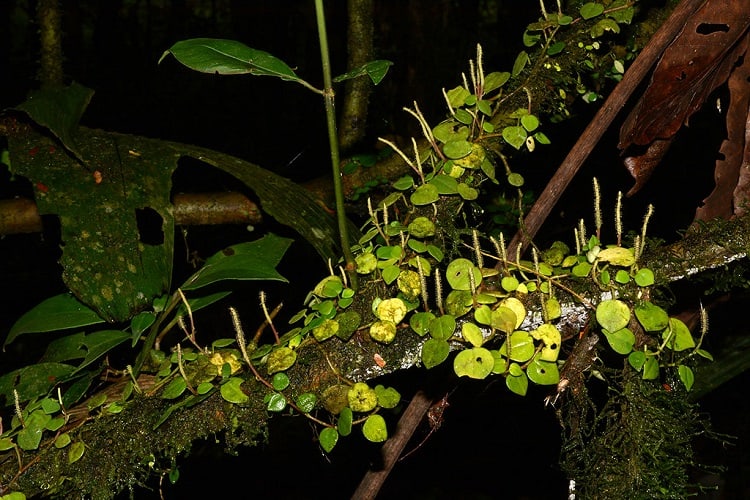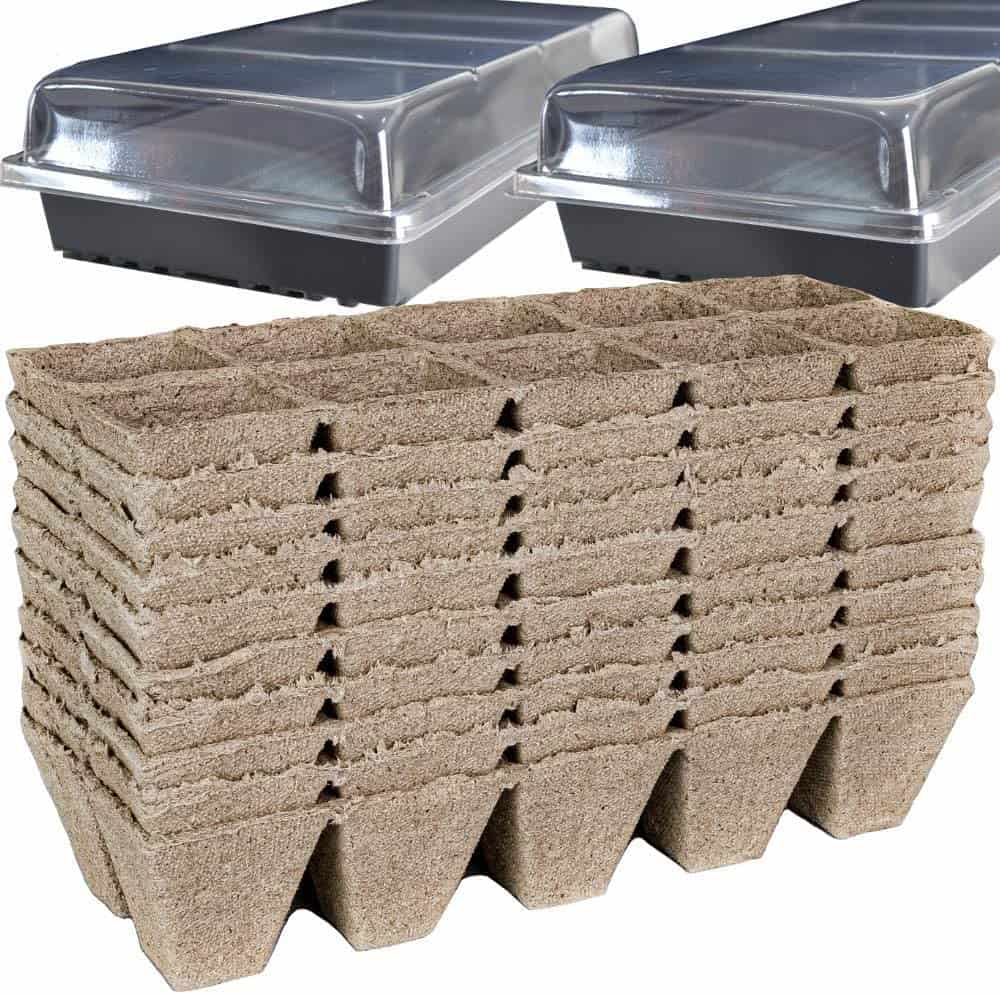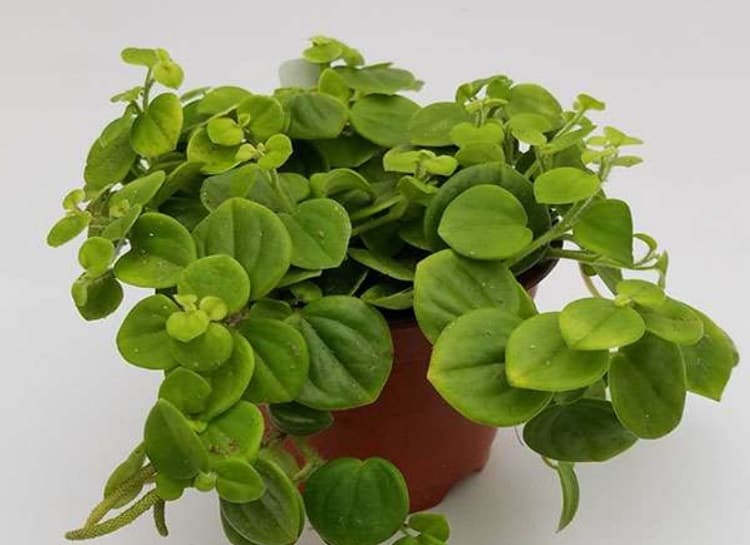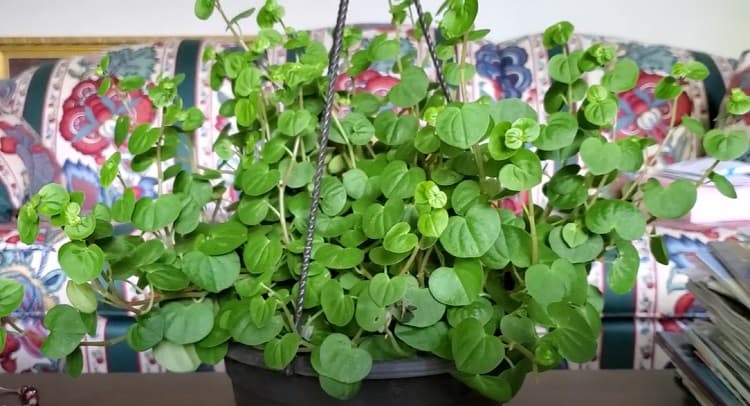- Peperomia Serpens: How Easy It Is To Care For It? - September 24, 2021
- Best Indoor Fiberglass Planters Guide: Our Top Picks - September 6, 2021
- Peperomia Polybotrya: Is It Easy To Keep This Plant Alive? - August 31, 2021
People just love growing Peperomia plants because of how easy they are to take care of and keep alive. They basically thrive on neglect, and you can get away with just watering them once a week. You also don’t have to prune or fertilize them.
However, there are certain care requirements that you should know when you’re caring for a Peperomia serpens. When you give them just the right amount of light, humidity, and temperature, as well as making sure they have just enough water and putting in the right type of soil, these plants will be at their healthiest.
So how should you care for your Peperomia serpens? What do you need to know? We suggest that you prepare yourself a cup of coffee and continue reading as we tell you how you can make your Peperomia serpens happy.
How to Identify Peperomia Serpens
Also known as the vining peperomia, Peperomia serpens is a trailing plant that comes from Central and South America. It has a creeping and spreading growth pattern, making it perfect for hanging baskets on top of putting them in your ordinary pots.
The defining characteristic of your plant is the cordate or heart-shaped leaves that it has. The leaves are broad and green, without any hairs. These leaves come out of the woody non-aromatic stems.
Peperomia serpens also has a variegated variety. The leaves on these variegated plants have creamy to yellow coloration. The Peperomia serpens is a perennial and can be herbaceous. The leaves are thick and can be succulent-like.
How to Grow Peperomia Serpens from Seed

While growing Peperomia serpens from seeds is easy, finding a retailer that sells the seeds can be quite a challenge. On top of that, you will need to buy from a trusted seller, as well. Sowing Peperomia serpens seeds from an unknown source will lessen your chances of successfully germinating them.
When you have your seeds, germination should be easy. You can use a seed starting tray filled with a soilless seed starting mix or any seed starter mix. We recommend:
- Espoma Seed Starter Premium Potting Mix
- Wonder Soil Organic Coco Coir Grow Mix Cube
- Hoffman 30103 Seed Starter Soil
These products will provide your Peperomia serpens with just the right amount of nutrients to germinate. Using these products, you’re bound to have a lot of success with starting your Peperomia from seed.
And if you do not have a starting tray yet, you should check out the AZEAM 120-Cell Seed Starter Tray. These plastic trays are reusable and have enough space for 120 plants. So you’re not just limited to Peperomia serpens. You can even start your collection of Peperomia plants from seeds and germinate them using this seed starter tray.

Or if you don’t like transplanting your seedlings, you can use these Mr. Sprout and Co. Peat Pots for Seedlings. This way, you can just plant the entire peat pot and have it disintegrate over time. Once you have sown the seeds according to the package instructions, you should water them well and put them near a warm window. Make sure that you keep the soil moist at all times until the seeds germinate.
When the seeds germinate, transplant the seedlings in an area where they can get indirect and bright sunlight.
How to Propagate Peperomia Serpens
If you have propagated any variety of Peperomia before, then you already know how to multiply your Peperomia serpens. Just get a stem cutting that have leaves included. You can put these stem cuttings in water or plant them directly in the soil. We prefer putting it in water so that you can watch the roots grow.
However, if you propagate using water, you will need to wait until the roots are about two inches or longer before transferring them to the soil. You really don’t have to wait with bated breath for that long when you propagate by directly planting it in soil. Plus, you keep the roots safe from transplant shock.
This video shows you how to propagate a variegated Peperomia Serpens:
How to Plant Peperomia Serpens
Peperomia serpens plants are easy to grow and keep alive. All you need is to give this plant its preferred growing conditions. If in doubt, always remember that it’s a plant from Central and South America, so it’s best to mimic the conditions it has grown accustomed to in the wild.
If you’re not sure about what the ideal conditions are, read on and get comfy.
Peperomia Serpens Growing Conditions
The perfect temperature for your Peperomia serpens is about 68 degrees Fahrenheit (20 degrees Celsius). But it’s a pretty forgiving plant. It can even tolerate lower temperatures, but it is not winter hardy. These plants also like moderate to high humidity. Put this plant in a dry or arid location, and it will not do very well. If you reside in an area where humidity levels are low, you can try misting your Peperomia serpens.
You can buy this Driew Plant Mister Spray Bottle. This PET mister and spray bottle holds up to 10 ounces (300 millimeters) of water and can keep your Peperomia serpens healthy even in a less humid environment.
Or, if you don’t like manually pumping water, you can rely on this Beautify Beauties Hair Spray Bottle, which gives you a continuous spritz of water. But if you have a lot of plants that like your Peperomia serpens, like moist surroundings, you can buy a product such as this KJRiver Plant Humidifier.
This portable humidifier can be placed beside your Peperomia serpens and give it the humidity that it likes.
Peperomia Serpens Potting & Soil

A Peperomia serpens would love well-draining soil because it hates having its roots standing in water when it comes to soil. Use soil that has a pH of 5.0 to 6.0. It should also allow air to circulate freely, or it will drown your plant’s roots. Choose something like these products:
- rePotme Houseplant Classic Potting Soil Mix, which gives your Peperomia some degree of protection from root rot because of the fantastic drainage
- Noot The Mix, which contains coarse perlite, husky mix, and rescue mix, ensures excellent drainage. This product is also a fertilizer with an NPK of 0.8 – 07 – 0.8.
- Miracle-Gro Houseplant Potting Mix is a fertilized perlite and soil mix formulated especially for different varieties of houseplants.
Pots for Your Peperomia Serpens
When considering planters and pots, you have a wide range of options for your Peperomia serpens. You can plant it in pots and let it trail downwards. It also helps if the pot has a lovely color and design, like this GreenMind Design Blue Ceramic Planter Pot Set.
What’s more, these pots have a drainage hole, which will ensure that your plant will not be waterlogged. Of course, a Peperomia serpens plant will do quite well when you put it in a hanging planter. A product like the Soledera Hanging Planter with Three Ceramic Pots will help you showcase your Peperomia serpens.
You can put the same plant on all three pots. Or choose two other plants that will go well with the all green vines of your Peperomia serpens. These plants will also do well inside a terrarium because of it prefers humid places. You can get something like the KooK Geometric Terrarium if you want to try having your Peperomia serpens in a not-so-ordinary planter.
Peperomia Serpens Water Requirements
When it comes to watering your Peperomia serpens, you should only water it when the top one to two inches of soil is dried out. Touch the surface of the soil and try to gauge if it’s still moist in some areas. If you feel a wet spot, you can hold off watering your plant for a day or two.
Peperomia serpens do not like to get their feet wet for too long. You can treat these plants like you would a succulent. If you want to schedule your watering, opt to do so once or twice a week. Further, remember to choose pots with a drainage hole. Plus, you should choose well-draining soil so you won’t have problems even when you do overwater your Peperomia serpens.
Peperomia Serpens Light Requirements
Peperomia serpens might be native to the hot and sunny climates of South and Central America, but these plants do not appreciate being placed under the hot sun for too long. These plants like dappled, or bright yet indirect, sunlight.
Inside your home, you can put these plants near an east-facing window where they can get the morning sun. Or you can even get away using fluorescent lighting to keep your Peperomia serpens healthy.
Best Peperomia Serpens Fertilizer
The good news is: you can most likely get away with not fertilizing your Peperomia serpens. However, you can feed your plant to make sure that it gets the nutrients it needs.
Fortunately, you don’t need any special fertilizers for your Peperomia serpens. You can use a general-purpose fertilizer or any plant food you use for your other indoor plants.
Some products that we can recommend:
- Purived Liquid Fertilizer for Indoor Plants
- Easy Peasy Indoor Plant Food
- Jacks Classic All-Purpose Fertilizer
Peperomia serpens does not require a special fertilizer, so there are no added costs.
Best Peperomia Serpens Companion Plantings
When it comes to companion plantings, you might want to put your Peperomia serpens with other types of peperomias. Most of them have roughly the same care requirements but look very different from each other.
For instance, you can mix a Peperomia serpens with a Peperomia rotundfilia. It can be disarrayed, but the different shaped leaves can be quite interesting. You can also mix it with Peperomia prostata, or string of turtles, to get the same effect.
You can also try using Peperomia polybotrya as a companion plant for your serpens. The Peperomia polybotrya, along with the watermelon peperomia and the Peperomia asperula, can grow tall, giving your low profile Peperomia serpens an interesting backdrop. To help you decide on which peperomia varieties you’d like to grow with your Peperomia serpens, this Nick Pileggi video will show you some of the different types of peperomia varieties:
If you don’t like having your Peperomia serpens compete with other members of its family, you can choose to plant it together with other plants. We can recommend peace lilies, dracaena, and Christmas cactus. These plants, thankfully, have the same care requirements as your Pepepromia serpens.
When choosing a companion plant, you should consider which ones have the same needs as your Peperomia serpens. For example, you don’t want to put in a water-guzzling plant only to put your Peperomia serpens in danger of developing root rot.
Peperomia Serpens Diseases and Common Problems
Peperomia Serpens plants are easy to care for and grow. A bonus is that it doesn’t have too many pests and diseases that you should worry about.
For the most part, you should only be mindful of how much water you give your plant. If it gets too much water and sits in wet soil for too long, it might get root rot and affect the leaves. Eventually, an overwatered Peperomia serpens will just die.
Your plant may also be susceptible to mites, mealybugs, or fungus gnats.
Peperomia Serpens Treatments and Maintenance

Aside from keeping a very close watch on the amount of water you give your plants, there is not much that your Peperomia serpens would require from you. If it gets attacked by mites or Mealybugs, there are easy ways to control them.
You can get a product such as the Trifecta Crop Control Super Concentrate, which can kill spider mites, powdery mildew, mold, insects, and other similar pests. Or, if you want a natural way to eliminate these pests, you can kill insects that prey on your plants using products such as the Natria 706230A Insecticidal Soap.
Pruning
As with feeding your plant, pruning your Peperomia serpens is usually not needed. However, you might want to cut back on the leaves to keep your plant to your desired size. More than that, prune your plant when there are damaged or dead parts. However, do not prune your Peperomia serpens too much, or you may end up killing or damaging your plant.
Where to Buy Peperomia Serpens Seeds and Mature Plants Online
As we have noted earlier, it might be a bit of a challenge to try and find Peperomia serpens seeds, especially when it’s online. You might want to try local garden centers or nurseries for these seeds.
You can, however, buy live plants and make it easier and faster for you to get this plant in your living room. Some of the retailers we can recommend are:
Grow a Peperomia Serpens, Possibly for Life!
We’re not exaggerating when we say that Peperomia serpens is one plant that’s very easy to grow and keep alive. In fact, this plant is one of the recommended for kids to take care of or those people who don’t necessarily have a green thumb. Just give this plant all the ideal growing conditions, and it will continue to thrive and stay healthy.
With no pruning and fertilizing necessary, there really is no reason why you shouldn’t give this plant a try.
FAQs
Question: Just How Many Peperomia Varieties Are There?
Answer: There are more than 1,600 native species of peperomia. They’re all part of the peppercorn family, but some 500 of them are ornamental.
That’s the thing with peperomia, you can collect them. You can probably start a collection of nothing but peperomias, and your friends and family will think that you’re growing different plant families.
Peperomias have different leaf shapes, sizes, and colors, depending on the variety that you have.
Aside from the Peperomia serpens, some of the more common varieties are:
• Peperomia argyreia, which is also called the watermelon peperomia because the leaves look like the fruit with its oval shape and silvery pattern
• Peperomia obtusifolia, which grows upright and has green and rounded leaves.
• Peperomia clusiifolia, better known as peperomia jelly, has multicolored leaves with a green center and cream edges.
Question: Is Peperomia Serpens Safe for Pets?
Answer: No. Unfortunately, Peperomia serpens can be toxic to your pets if they eat them. If you have dogs or cats, it’s best not to have Peperomia serpens. When eaten, this plant can cause diarrhea, vomiting, and irritation.
Question: What Are the Uses for Peperomia Serpens?
Answer: Aside from being beautiful houseplants, Peperomia serpens can also serve as a groundcover. You will love just how it looks when it’s surrounded by taller plants. What’s more, if you like terrariums, you should definitely try setting one up that has Peperomia serpent in it. It’s an interesting display.
Research Citations
- NC State University: Peperomia serpens
- Gardening Know-How: Peperomia seed propagation (Cached)
- Osera Houseplant Care: Peperomia Serpens Care | Top Tips!
- YouTube: PEPEROMIA SCANDENS VARIEGATA |How To Propagate | Low Maintenance | EASY CARE Trailing Houseplant!
- Plantophiles: Peperomia Serpens #1 Best Care Tips
- YouTube: All Of My 50+ Varieties Of Peperomia | Houseplant Tour
- Home Gardeners: Peperomia Plant – How Did Radiator Plants Become the Best? Find Out.
- My Little Jungle: How Big does Peperomia Grow?
- The Spruce: Peperomia Plant Profile

